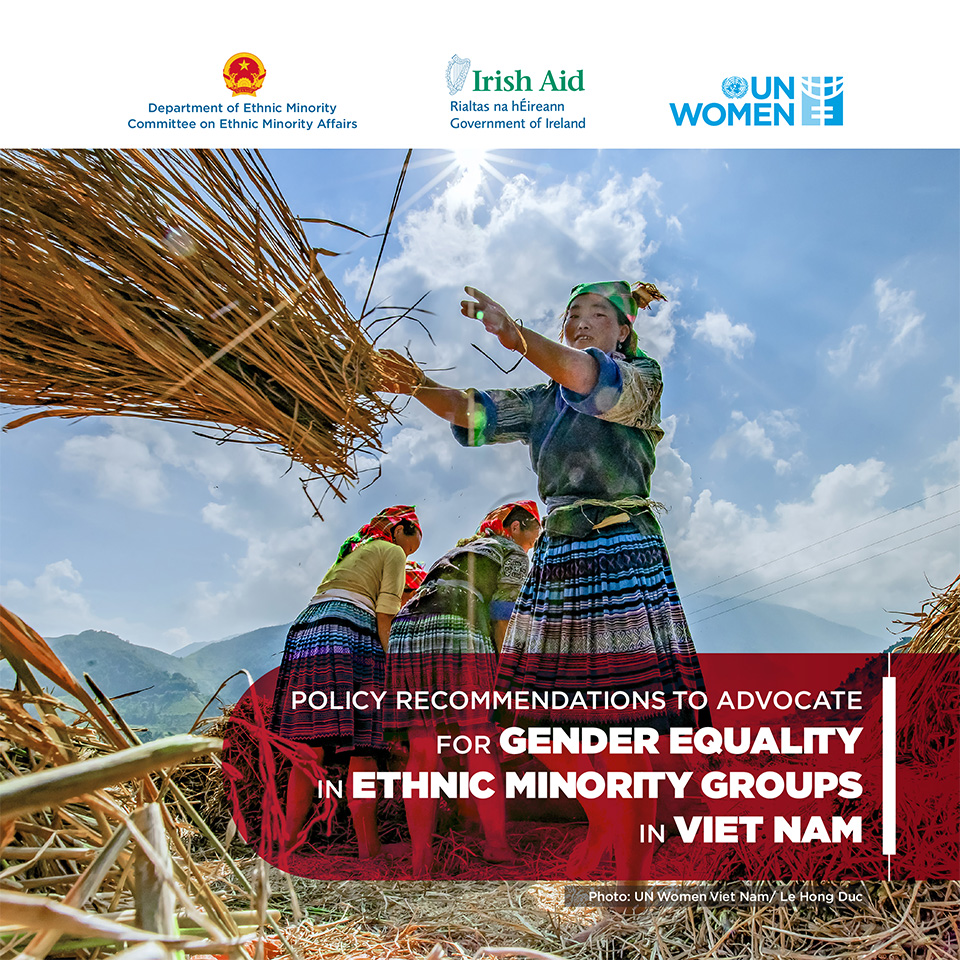
Policy recommendations to advocate for Gender equality in ethnic minority groups in Viet Nam

Viet Nam is an ethnically diverse country with 54 recognized ethnic groups, of which 53 are minorities. The majority of the population (85.5 per cent) belongs to the Kinh ethnic group, and the 53 other ethnic groups in Viet Nam account for the remainder of the population and total about 13.4 million people. Many of the ethnic minority groups are concentrated in geographically remote and mountainous regions of the country. Inequalities between the Kinh ethnic group and ethnic minority groups remain wide and persistent, especially in education and training, employment and income, and health care and reproduction. The gender gap among and within ethnic minority groups also persists.
The policy brief document has been developed based on the findings from the Survey on the Socio-Economic Situation of the 53 Ethnic Minority Groups in Viet Nam (2015) and other studies on ethnic minority groups conducted recently in Viet Nam. It aims to support the process of policy development and implementation in ethnic minority areas in Viet Nam and effectively contribute to the inclusive promotion of gender equality in ethnic minority areas in line with the commitments of the Government of Viet Nam to the 2030 Agenda for Sustainable Development.
Các khuyến nghị chính sách nhằm thúc đẩy bình đẳng giới trong các dân tộc thiểu số ở Việt Nam
Việt Nam là quốc gia đa sắc tộc với 54 nhóm dân tộc cùng sinh sống, trong đó có 53 nhóm dân tộc thiểu số. Phần lớn dân số Việt Nam (85,5%) thuộc dân tộc Kinh; còn lại 13,4 triệu người thuộc 53 dân tộc thiểu số. Hầu hết các nhóm dân tộc thiểu số sống tập trung ở miền núi, vùng sâu, vùng xa trên khắp cả nước. Sự bất bình đẳng trong các nhóm dân tộc thiểu số và giữa các nhóm dân tộc thiểu số với dân tộc Kinh vẫn còn lớn và tổn tại dai dẳng, đặc biệt trong các lĩnh vực giáo dục và đào tạo, việc làm và thu nhập, chăm sóc sức khỏe và sức khỏe sinh sản. Khoảng cách giới trong các nhóm dân tộc thiểu số và giữa các nhóm dân tộc thiểu số vẫn tồn tại.
Tài liệu này được xây dựng dựa trên kết quả Điều tra quốc gia về thực trạng kinh tế-xã hội của 53 DTTS ở Việt Nam (2015) và một số kết quả nghiên cứu đượcthực hiện trong thời gian gần đây trong lĩnh vực DTTS ở Việt Nam. Tài liệu được xây dựng với mong muốn hỗ trợ cho quá trình xây dựng và thực hiện chính sách đối với vùng DTTS ở Việt Nam; góp phần thúc đẩy bình đẳng giới ở vùng DTTS một cách hiệu quả và toàn diện như Việt Nam đã cam kết thực hiện trong các mục tiêu Phát triển bền vững ở Việt Nam đến năm 2030.